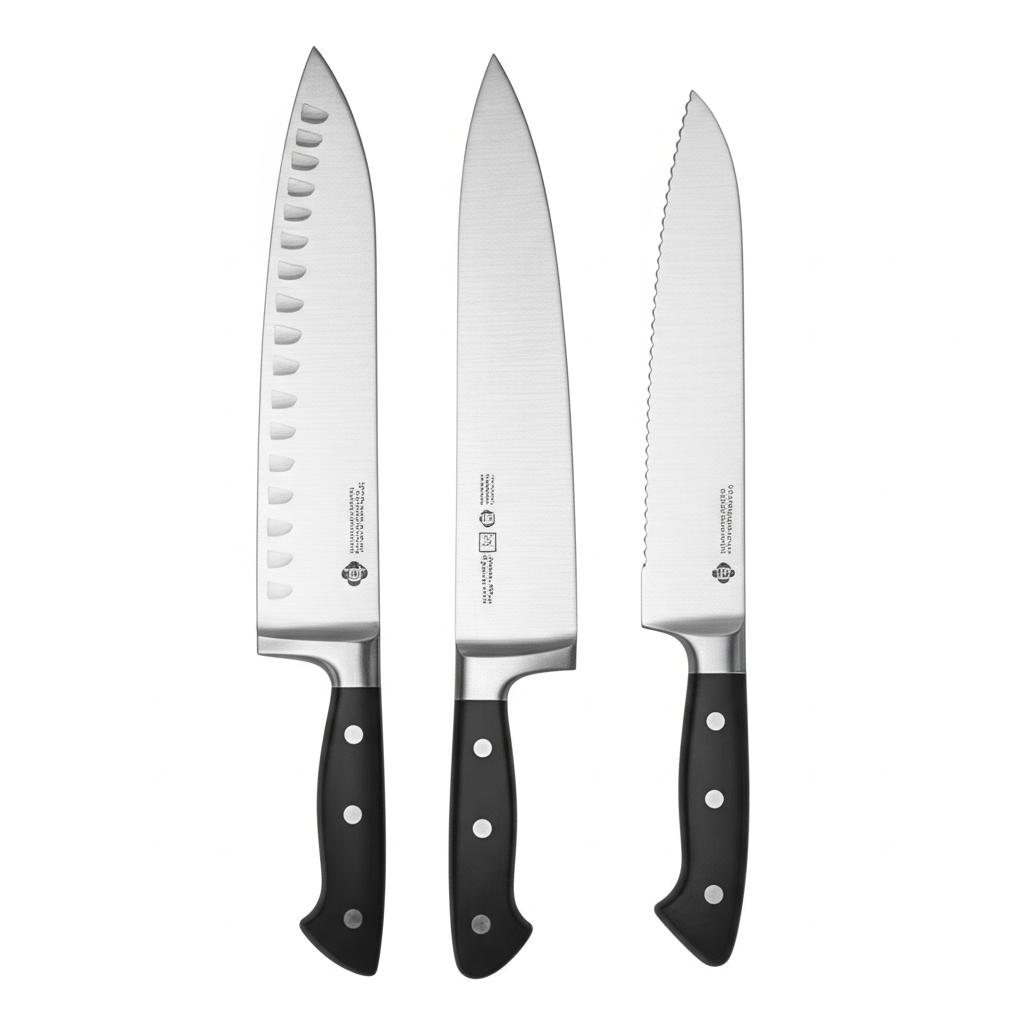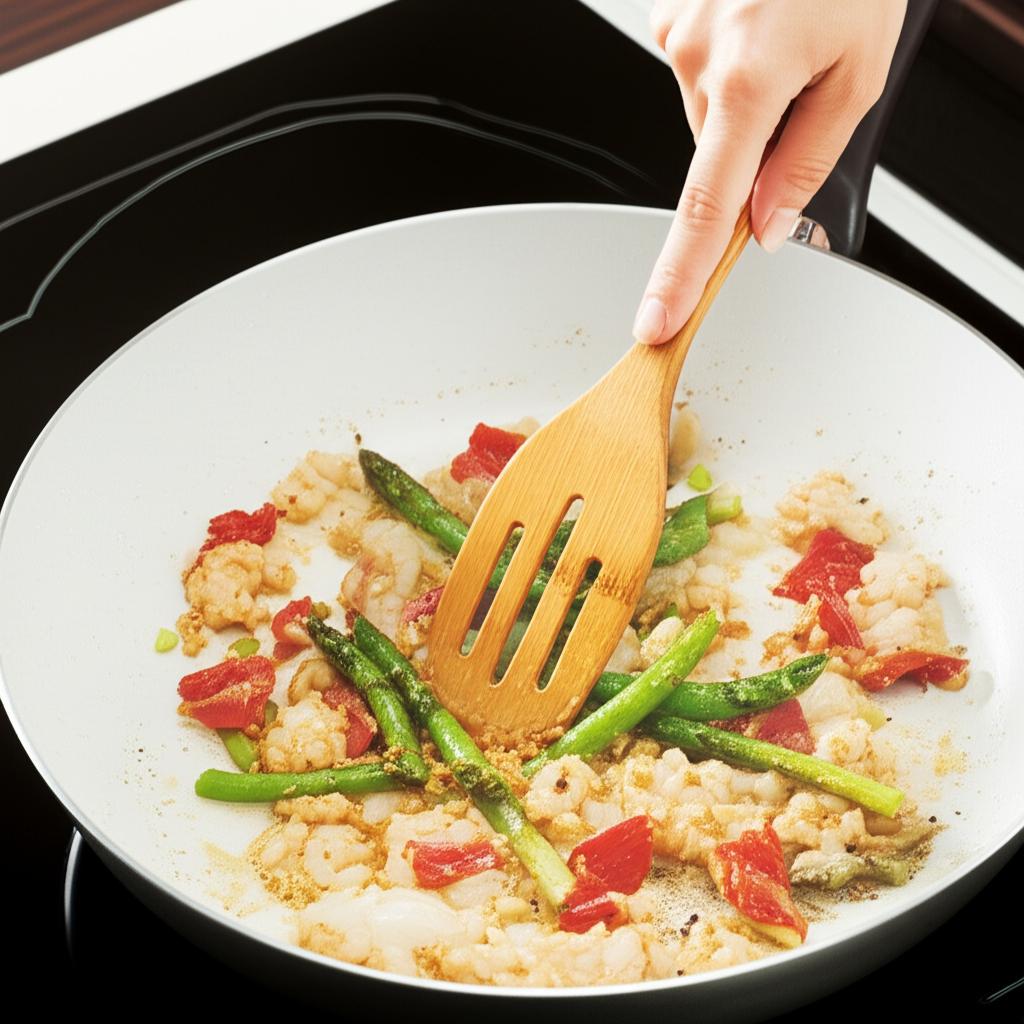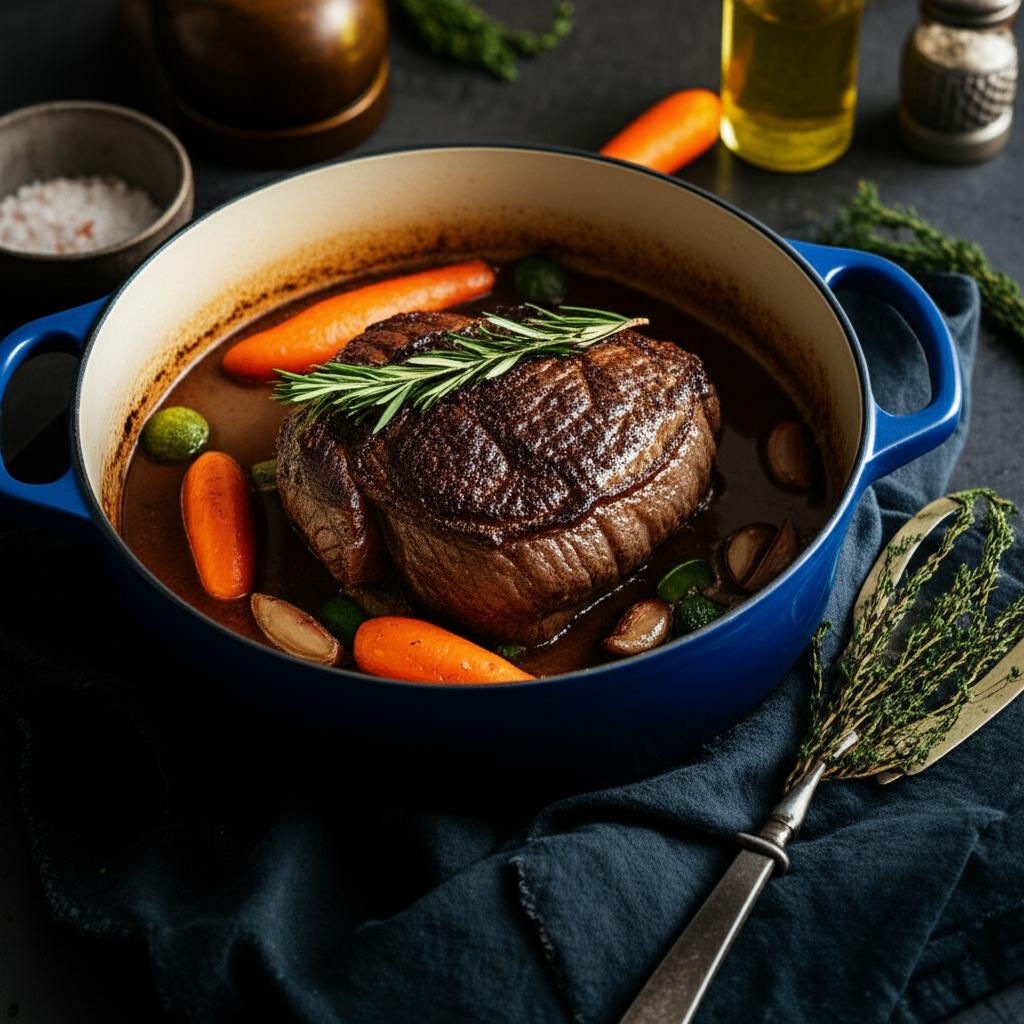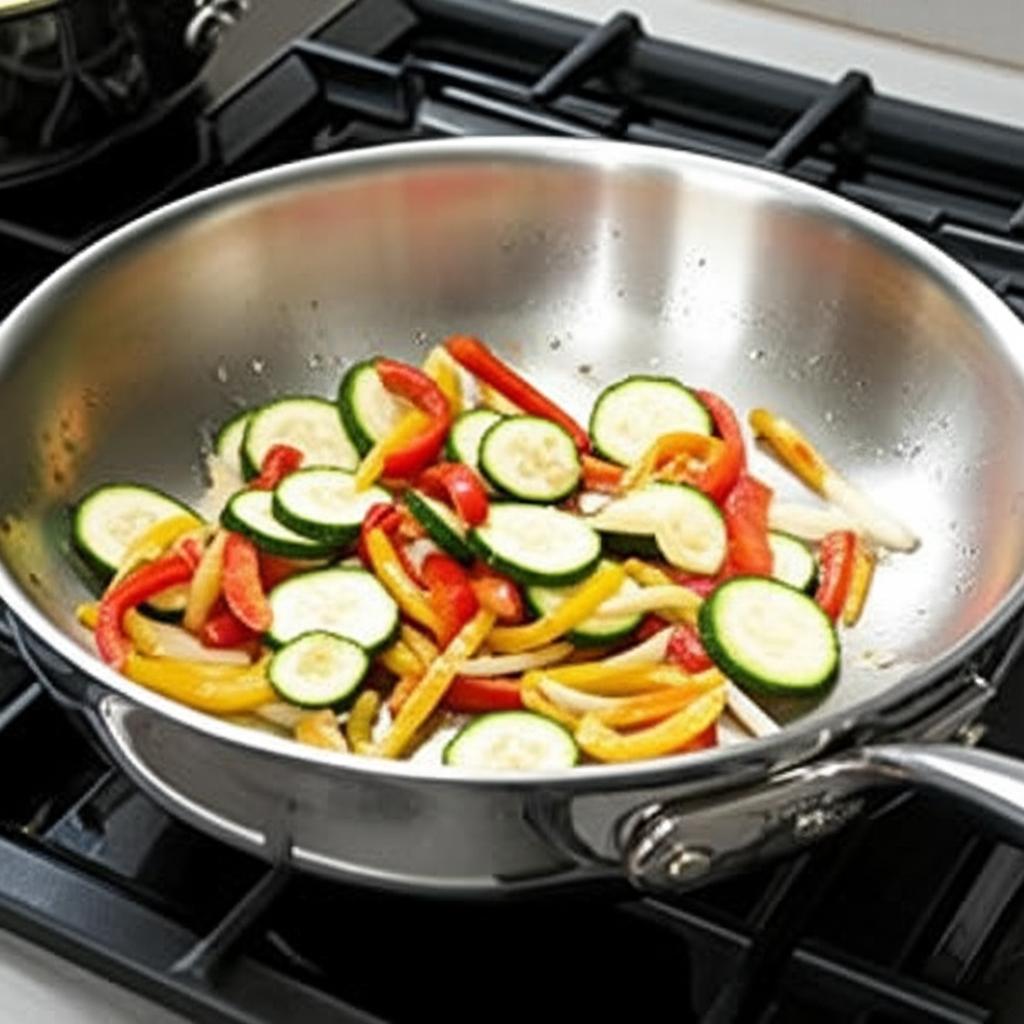
Slice, Dice, and Conquer: How to Choose the Right Kitchen Knives for Home Use
Ever wondered what separates a culinary wizard from a kitchen struggler? Often, it’s not just skill, but the quality of their tools. At the heart of every great home kitchen lies a set of sharp, reliable knives. They’re not just implements for cutting; they’re extensions of your hand, making every prep task safer, faster, and infinitely more enjoyable.
But with a dizzying array of options, how do you choose the right kitchen knives without getting overwhelmed or breaking the bank? Forget endless product lists and confusing jargon. This guide will walk you through everything you need to know to select the perfect blades for your home cooking needs, ensuring you invest wisely in tools that will serve you for years to come.
Why Good Knives Matter (More Than You Think!)
Before we dive into the “how,” let’s quickly touch on the “why.”
- Safety First: Counterintuitively, a sharp knife is much safer than a dull one. A sharp blade glides through food with minimal pressure, reducing the chance of slipping and causing injury. A dull knife requires more force, increasing the risk of it skidding off the food and onto your fingers.
- Efficiency & Enjoyment: Imagine effortlessly slicing through a ripe tomato or finely mincing garlic. Good knives make prep work a breeze, saving you time and frustration. Cooking becomes a joy, not a chore.
- Better Results: Clean cuts mean better-looking dishes and even cooking. Crushing herbs or tearing vegetables with a dull blade damages their cellular structure, affecting flavor and presentation.
- Durability & Longevity: Quality knives, when properly cared for, are an investment that can last a lifetime.
Understanding the Essential Kitchen Knife Types for Home Use
You don’t need a massive block filled with obscure blades. For most home cooks, a few key knives cover almost every task. Focus on these foundational pieces:
-
The Chef’s Knife: Your Kitchen Workhorse
- Purpose: This is your most important and versatile knife. Used for chopping, slicing, dicing, and mincing fruits, vegetables, and meats.
- Characteristics: Typically 8-10 inches long with a broad, curved blade that allows for a rocking motion.
- Tip: If you only buy one good knife, make it a high-quality Chef’s Knife.
-
The Paring Knife: The Detailer
- Purpose: Ideal for small, intricate tasks like peeling fruits and vegetables, deveining shrimp, trimming garnishes, or mincing a single clove of garlic.
- Characteristics: Small, 3-4 inches long, with a sharp, pointed blade.
- Tip: Essential for precision and tasks where a large knife feels clumsy.
-
The Serrated Utility/Bread Knife: The Slicer of Soft & Crusty
- Purpose: Designed for foods with tough exteriors and soft interiors (like bread, tomatoes, citrus) or delicate items that bruise easily.
- Characteristics: Long, usually 8-10 inches, with a serrated (saw-like) edge.
- Tip: Don’t try to cut bread with your Chef’s Knife – you’ll just crush it. A good serrated knife is a game-changer for sandwiches and toast.
-
The Utility Knife (Optional, but Handy)
- Purpose: A versatile mid-sized knife (4-6 inches) that’s often described as a smaller Chef’s knife. Good for tasks too large for a paring knife but too small for a Chef’s knife.
- Characteristics: Straight or slightly curved blade, pointed tip.
- Tip: A good addition if you find your Chef’s knife sometimes feels too big for certain smaller chopping tasks.
Step-by-Step Guide: How to Choose Your Perfect Kitchen Knives
Now that you know the basics, let’s get practical.
Step 1: Assess Your Needs & Cooking Habits
- What do you cook most often? Are you a vegetarian who chops a lot of produce? Do you frequently prepare roasts and poultry? Are you a baker who needs to slice loaves?
- How often do you cook? Daily? Weekly? This will influence how much you invest and the level of durability you need.
- What’s your current knife situation? Are you replacing worn-out knives, upgrading, or starting from scratch?
- Recommendation: Begin by identifying the one or two knives you’ll use most frequently. For most home cooks, this means a Chef’s Knife and a Paring Knife. Add a serrated knife if bread is a staple in your diet. You can always expand your collection later. Don’t feel pressured to buy a huge set.
Step 2: Understand Key Features & Terminology
Knowing these terms will help you compare options intelligently.
-
Blade Material:
- Stainless Steel: Most common. Corrosion-resistant, easy to maintain, but can be softer and require more frequent sharpening.
- High Carbon Stainless Steel: The best of both worlds for home use. Combines the rust resistance of stainless steel with the edge retention and strength of high carbon steel. This is generally what you want for quality knives.
- Avoid: Ceramic (extremely sharp but very brittle and hard to sharpen) and basic carbon steel (rusts easily, high maintenance, typically for pros).
-
Construction: How the Blade is Made
- Forged Knives: Made from a single piece of steel that is heated and hammered into shape. They typically have a full tang (see below) and a bolster (the thick part where the blade meets the handle).
- Pros: Extremely durable, well-balanced, excellent edge retention. Generally considered higher quality.
- Cons: More expensive, heavier.
- Stamped Knives: Cut from a large sheet of steel and then sharpened. They are lighter and don’t usually have a bolster.
- Pros: Lighter, more affordable.
- Cons: Can feel less balanced, may not hold an edge as long as forged knives.
- Recommendation: For your primary knives (like the Chef’s Knife), invest in forged if your budget allows. For less-used knives, stamped can be perfectly adequate.
- Forged Knives: Made from a single piece of steel that is heated and hammered into shape. They typically have a full tang (see below) and a bolster (the thick part where the blade meets the handle).
-
Tang (Blade Extension into Handle):
- Full Tang: The blade steel extends all the way through the handle. You can often see it as a line of metal along the top or bottom of the handle, typically riveted between two handle scales.
- Pros: Superior balance, strength, and durability. Less likely for the handle to separate from the blade.
- Cons: Generally found in more expensive, forged knives.
- Partial Tang (or Half Tang): The blade extends only partway into the handle.
- Pros: Lighter, cheaper.
- Cons: Less durable, poorer balance, higher risk of handle breakage.
- Recommendation: Always aim for full tang knives for your essential everyday blades.
- Full Tang: The blade steel extends all the way through the handle. You can often see it as a line of metal along the top or bottom of the handle, typically riveted between two handle scales.
-
Handle Material & Ergonomics:
- Materials: Common options include wood (beautiful but needs care), composite (durable, low maintenance), and synthetic (plastic, rubber, often with good grip).
- Ergonomics: This is paramount. A knife handle should feel comfortable and secure in your hand, even when wet. It should provide a good grip and prevent your hand from sliding onto the blade.
- Tip: Handle material is less about performance and more about personal preference and comfort.
-
Balance & Weight:
- A well-balanced knife feels like an extension of your arm, not heavy in the blade or the handle. When you hold it, it shouldn’t feel unwieldy.
- Weight is subjective. Some prefer a heavier knife for power, others a lighter one for agility. There’s no right or wrong, but the knife should feel good in your hand.
Step 3: Test Before You Buy (If Possible!)
This is perhaps the most crucial step you can take. While online shopping offers convenience, if possible, go to a physical store where you can handle different knives.
- Hold the Knife: Pick it up. How does it feel? Is it too heavy or too light?
- Grip: Does the handle fit comfortably in your hand? Does your hand feel secure? Imagine chopping for 15 minutes – would it cause fatigue or blisters?
- Balance: Place your index finger on the point where the blade meets the handle (the bolster, if it has one). A well-balanced knife will feel stable, not tip forward or backward excessively.
- Practice the Motion: Mimic a chopping motion. Does it feel natural and controlled?
Step 4: Consider Your Budget
Quality knives are an investment, but that doesn’t mean you need to spend a fortune.
- Define your price range: High-quality knives can range from $50-$200+ per knife. More affordable, good-quality options exist in the $30-$70 range.
- Prioritize: If budget is tight, invest in one excellent Chef’s Knife rather than a mediocre full set. You can always add other quality knives over time.
- Value vs. Price: Don’t just look at the price tag. Consider the materials, construction, and how long the knife will last with proper care. A slightly more expensive knife that lasts 20 years is a better value than a cheap one you replace annually.
Essential Tips for Success (Beyond the Purchase)
Choosing the right knives is just the first step. Proper care ensures they remain a joy to use.
- Start with the Essentials: You really only need a good Chef’s Knife, a Paring Knife, and a Serrated Knife. Add others as your skills and needs evolve.
- Learn to Use a Sharpening Steel (Honing Rod): This isn’t sharpening; it’s honing – realigning the microscopic edge of your blade. Do it frequently (every few uses) to maintain sharpness. A honing rod is different from a knife sharpener, which removes material to create a new edge.
- Get Your Knives Professionally Sharpened (or learn to do it yourself): Over time, honing isn’t enough. Your knives will need a true sharpening. Look for a local service or invest in a quality home sharpener.
- Hand Wash Only: Never put your good knives in the dishwasher. The harsh detergents and banging around can dull the blade and damage the handle. Wash by hand immediately after use, dry thoroughly, and put away.
- Store Them Properly: Don’t just toss them in a drawer. This dulls the blades and is a safety hazard. Use a knife block, magnetic strip, or in-drawer knife tray.
- Use the Right Cutting Board: Always use a wood or high-density plastic cutting board. Glass, stone, or ceramic boards will immediately dull your knife’s edge.
Common Mistakes to Avoid When Choosing Kitchen Knives
- Buying the Biggest Set: Often, large sets include many knives you’ll never use, and the quality of individual knives may be compromised for the sake of quantity. Focus on quality over quantity.
- Ignoring Balance and Feel: A knife might look great, but if it doesn’t feel right in your hand, you won’t enjoy using it. This is highly personal.
- Not Testing Before Buying: If possible, always hold and mimic a chopping motion with the knife before purchasing.
- Neglecting Care: Even the most expensive knife will perform poorly if you don’t clean, hone, and sharpen it regularly.
- Using the Dishwasher: This is a knife killer. Seriously, don’t do it.
- Buying Blindly Based on Price: Both the cheapest and most expensive knives aren’t always the best. Look for good value and features that match your needs.
Conclusion
Choosing the right kitchen knives for your home is a personal journey, but by understanding the basics of blade types, materials, construction, and handle ergonomics, you’re well on your way. Remember, it’s not about having the most knives, but the right knives that feel comfortable and perform well for you.
Invest in a few high-quality, essential blades, care for them properly, and you’ll transform your cooking experience from a chore into a truly enjoyable art form. Happy chopping!
FAQ
Q. What are the absolute essential kitchen knives every home cook needs?
A. For most home cooking, you primarily need three knives: a Chef’s Knife (8-inch is standard for versatile chopping, slicing, dicing), a Paring Knife (2.5-4 inches for intricate tasks like peeling and coring), and a Serrated Knife (8-10 inches, often called a bread knife, for slicing through crusty bread, tomatoes, and roasts).
Q. Should I choose forged or stamped knives, and what’s the difference?
A. Forged knives are made from a single bar of steel, heated, and hammered into shape, resulting in a heavier, more durable, and often more expensive knife with a full bolster and tang. Stamped knives are cut from a sheet of steel and are generally lighter, more flexible, and more affordable. While forged knives typically offer superior balance and longevity, stamped knives are a good entry-point for beginners or those on a budget.
Q. What’s the best blade material for home kitchen knives?
A. Most home kitchen knives are made from high-carbon stainless steel. This material offers an excellent balance of sharpness retention, stain resistance, and ease of sharpening for general home use. Ceramic knives are extremely sharp and lightweight but are brittle and prone to chipping. High-carbon steel (non-stainless) offers superior sharpness and edge retention but requires more maintenance to prevent rust.
Q. How important is the knife’s handle, and what should I look for?
A. The handle is crucial for comfort, control, and safety. Look for a handle that fits comfortably in your hand, offers a secure grip (even when wet or oily), and is made from a durable, hygienic material like synthetic polymers, stabilized wood, or stainless steel. A full tang (where the blade steel extends through the entire handle) generally indicates a more balanced and durable knife construction.
Q. How do I choose the right size Chef’s Knife for me?
A. The most common Chef’s knife size is 8 inches, which is versatile for most tasks. However, if you have smaller hands or prefer more control, a 6-inch or 7-inch knife might feel more comfortable. Taller individuals or those who frequently prepare large quantities might prefer a 9-inch or 10-inch knife. It’s highly recommended to hold different sizes in person to see what feels balanced and comfortable in your hand.
Q. Is it better to buy a knife set or individual knives?
A. For beginners, a well-chosen knife set can be a convenient and cost-effective way to acquire essential knives. However, sets often include knives you may rarely use and can vary widely in quality. Buying individual knives allows you to invest in higher-quality pieces for the specific types of knives you’ll use most frequently (e.g., a good chef’s knife, paring knife, and bread knife), tailored precisely to your preferences and budget.
Q. Does knife maintenance and sharpening affect my choice of knives?
A. Yes, absolutely. All knives require regular sharpening and honing to perform optimally. Some blade steels hold an edge longer but are harder to sharpen (common in very hard Japanese steels), while others are easier to maintain but require more frequent attention. Consider your willingness to learn sharpening techniques or invest in professional sharpening services. Also, prioritize knives that are easy to clean by hand, as dishwashers can dull edges and damage handles.
Related Articles
Simple Cooking Techniques Every Beginner Should Learn
Master the Kitchen: Simple Cooking Techniques Every Beginner Should Learn Recommended Product: Baking Class: 50 Fun Recipes Kids Will Love […]



